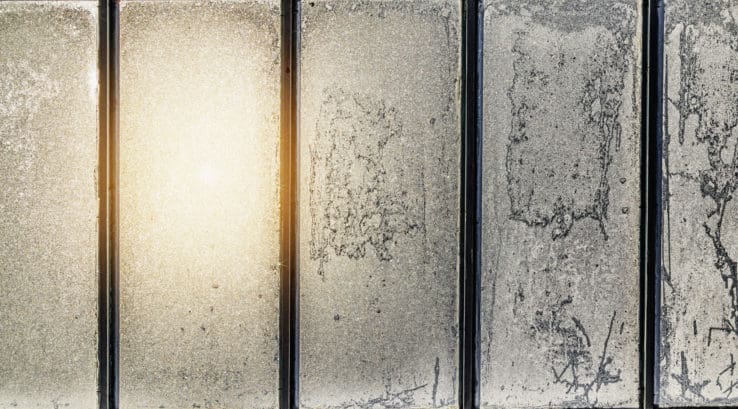This winter you might invite Frosty the Snowman to take his place outside your home, but what isn’t welcome is the frost that’s appearing on your windows inside your home. Frosted window panes are something of a holiday tune, but they aren’t music to a homeowner’s ear. Frost can damage a window and create an environment for mold growth. There are a few reasons why frost can appear in the inside of your window and there are things you can do to fix it.
Why is there frost build up on the inside of my windows?
Like a frosty mug or a can of ice-cold soda, frost appears when warm meets cold. Frost happens when warm indoor air that is more than 50 percent relative humidity and 70 degrees hits any cold surface, like a window that is below 30 degrees. That air will condense onto the window and freeze, as explained by the Cooperative Extension.
What can happen as a result of frost on my window?
Frost is water frozen into ice crystals. As it melts, the water can damage your window, your wall and your air quality inside your home. Water from melted frost can crack paint and warp a wooden window. That can cause your window to fail in its seal and protection. The resulting water from melting frost on your window can also get into your drywall and your window frame creating the perfect environment for mold to grow. Mold can degrade your home’s air quality and can be harmful to those with compromised immune system, the elderly, the young and others. Frosted windows become damaged windows which can mean leaky, drafty windows. That might lead homeowners to turn up the temperature in your home and add to your energy bill.
How to prevent frost on the inside of your home’s windows?
Preventing frost on your windows takes a combination of monitoring your home’s humidity, making sure your windows fit, and keeping your home’s temperature consistent.
- Regulate your home’s humidity. If necessary, run a dehumidifier to keep the inside air drier and less prone to condensation. Check your home for moisture problems in the basement or attic. Make sure all exhausts vents like those for your clothes dryer are working properly.
- Prepare your windows for winter by making sure they are caulked properly.
- Remove screens on single pane windows and install storm windows to create an extra barrier from the cold.
- Your home’s temperature in winter should be warm enough to keep frost from forming.
- Repair worn or missing weatherstripping on your windows’ sash. Problems with weatherstripping can lower the temperature of the glass and contribute to frost forming on windows.
- Replace ill-fitting windows or upgrade from single pane to the energy efficiently of double pane windows. Double pane replacement windows provide a pocket of gas that helps slow down the transfer of heat and cold temperatures.
Finding out the cause of frost on your windows is important to your health and to your budget. If you find your ill-fitting or old windows are the cause of your frost problem, our Thompson Creek experts can help you solve it. We design, build and install our replacement windows so we know they are the perfect fit for your home. And if you still like the look of frosted windows panes, check out this DIY project to create your own frost using Epsom salt.


